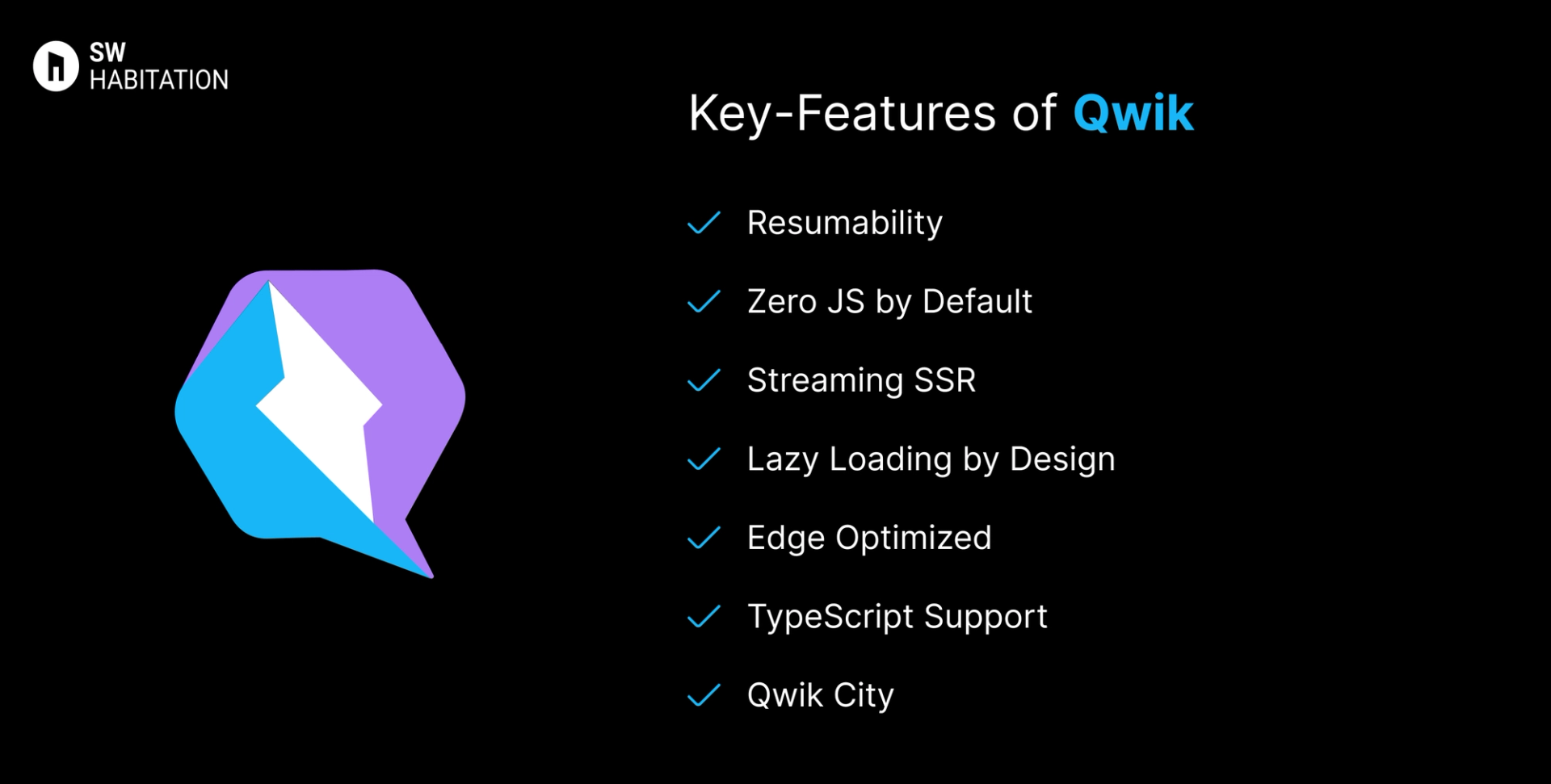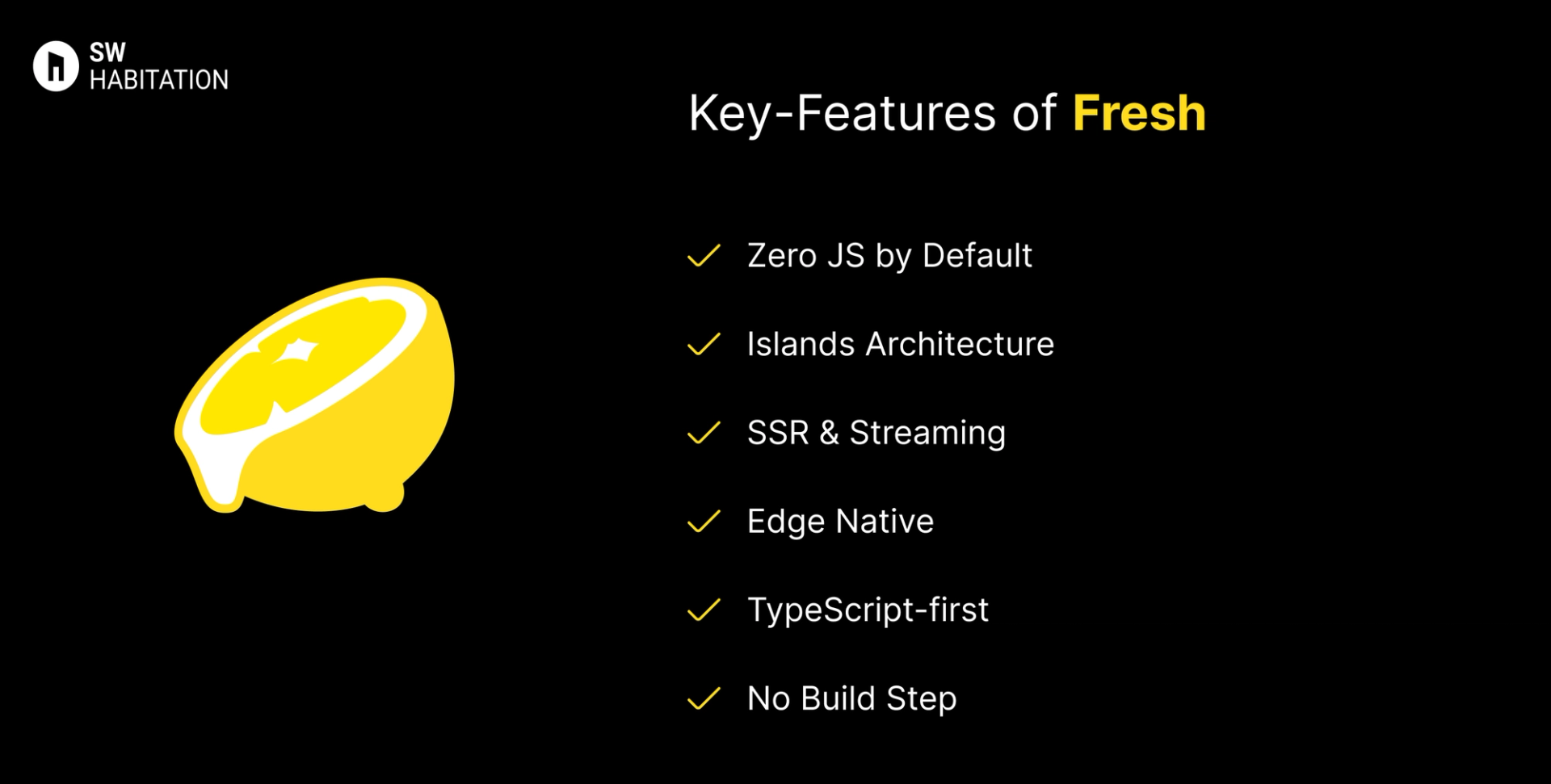Qwik vs. Fresh

Qwik

Fresh
So, you know when you want to build a website or app, but doing everything from scratch feels kinda overwhelming? That’s where web frameworks come in. They’re like a ready-made set of tools and building blocks that help you get things up and running way faster. Instead of figuring out every little piece yourself, a framework gives you a solid base to build on, and lets you focus on making something cool.
What is Qwik?
Qwik is a next-generation JavaScript framework designed for instant-loading web apps by using resumability instead of hydration. Unlike React, Vue, or Solid, which re-render components on the client, Qwik ships minimal JavaScript and resumes execution exactly where the server left off.
This makes Qwik ideal for ultra-fast, SEO-friendly apps with near-instant Time-to-Interactive (TTI), even on slow networks or devices.
Key Features of Qwik


- Resumability: No hydration,resumes app state instantly on the client.
- Zero JS by Default: Ships only the JavaScript needed for interaction.
- Streaming SSR: Server-rendered HTML streams for faster load times.
- Lazy Loading by Design: Every component is lazy-loaded automatically.
- Edge Optimized: Runs efficiently on modern edge platforms.
- TypeScript Support: Works seamlessly with TypeScript.
- Qwik City: Official meta-framework with routing, SSR, and middleware.
Advantages of Qwik
- Blazing Fast: Instant interactivity without hydration.
- Minimal JavaScript: Loads only what’s necessary.
- SEO-Friendly: Pre-rendered HTML with resumability.
- Qwik City: Built-in file-based routing and full-stack features.
- Future-Proof: Designed for edge-first and low-bandwidth devices.
Disadvantages of Qwik
- New Ecosystem: Still growing, fewer libraries compared to React/Vue.
- Learning Curve: Resumability and lazy-loading model may feel new.
- Tooling Maturity: Some integrations (like CMS/auth) need custom setup.
- Smaller Community: Not as large as React or Angular yet.
What is Fresh?
Fresh is a full-stack web framework for Deno that prioritizes zero JavaScript by default and leverages the islands architecture. Instead of hydrating entire pages, Fresh delivers static HTML and only hydrates isolated, interactive "islands" where needed.
Fresh is originally designed for modern edge computing with Deno Deploy, has no build step, and relies on native ES modules and TypeScript. It’s ideal for fast, lightweight, SEO-friendly apps with minimal complexity.
Key Features of Fresh


- Zero JS by Default: Ships no JavaScript unless components explicitly need interactivity.
- Islands Architecture: Interactive components exist in isolated islands for optimal performance.
- SSR & Streaming: Server-rendered HTML with support for streaming.
- Edge Native: Optimized for Deno Deploy and edge hosting.
- TypeScript-first: Built-in TypeScript support without config.
- No Build Step: Instant reloads, no bundling or transpiling.
Advantages of Fresh
- Ultra-lightweight Performance: Minimal JS means faster load times.
- No Build Step: Faster developer iteration; you write, refresh, and go.
- Edge-Optimized: Runs seamlessly on Deno Deploy with serverless scaling.
- Modern Standards: Uses ES modules, TypeScript, and Web APIs directly.
- Simple DX: File-based routing, components, and islands make development intuitive.
Disadvantages of Fresh
- Deno Only: Requires Deno runtime, limiting adoption among Node.js developers.
- Smaller Ecosystem: Fewer third-party libraries and integrations.
- Early Stage: Still maturing, not as widely adopted as Next.js.
- Custom Solutions: Some features like authentication or CMS integrations need manual setup.
Comparison Between Qwik vs Fresh
Use Cases of Qwik
- Landing Pages: Instant-loading, SEO-friendly marketing sites.
- E-commerce: Fast product pages with lazy-loaded interactivity.
- Dashboards: Data-heavy apps that benefit from resumability.
- PWAs: Progressive Web Apps with instant interactivity.
- Edge-Native Apps: Apps deployed on edge networks like Vercel or Netlify.
Use Cases of Fresh
- Marketing Websites: Pre-rendered, SEO-optimized pages with minimal JS.
- Blogs/Portfolios: Static sites with optional interactive islands.
- E-commerce Landing Pages: Server-rendered product data with interactive carts as islands.
- Edge-native Apps: Applications running globally on Deno Deploy.
Other Resources
Conclusion
Web frameworks make building websites and apps a whole lot easier. Whether you’re working on a personal project or something big for work, they help with the heavy lifting—like routing, design structure, and how everything connects.
With support for things like server-side rendering, optimized performance, and developer-friendly features, these tools let you create faster, smarter, and cleaner websites. Just pick the one that fits your style, and start building something awesome 🚀
Frequently asked questions
Is Qwik better than React?
Faster in load time and interactivity, but React has a larger ecosystem.
Does Qwik use JSX?
Yes, Qwik uses JSX/TSX syntax.
Can I use Qwik with TypeScript?
Yes, it has built-in TypeScript support.
Is Qwik production-ready?
Yes, it’s stable and used in production, but still growing.
What is Qwik City?
The official meta-framework for routing, SSR, and middleware.
When should I use Qwik?
When you need ultra-fast, SEO-optimized apps with instant interactivity.
Is Fresh production-ready?
Yes. Fresh is stable and actively maintained by the Deno team.
Why does Fresh not need a build step?
It uses native ES modules and Deno runtime, so no bundling is needed.
Can I use npm packages in Fresh?
Fresh relies on Deno’s ecosystem. You can import npm modules using Deno’s compatibility layer.
How does Fresh compare to Qwik City?
Both focus on minimal JS, but Qwik uses resumability, while Fresh uses islands.
Does Fresh support TypeScript?
Yes. Fresh is TypeScript-first out of the box.
